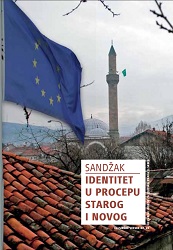
We kindly inform you that, as long as the subject affiliation of our 300.000+ articles is in progress, you might get unsufficient or no results on your third level or second level search. In this case, please broaden your search criteria.

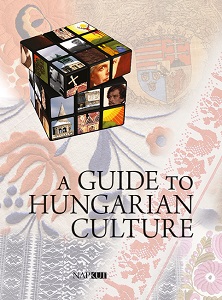
Our geographic and historical location on the Continent and in the world has meant that we’ve always been simultaneously in the centre and at the periphery, located at the edge of Europe yet at the ancient heart chakra of the globe, and in the Carpathian Basin with its abundance of water – the greatest treasure for the future. Hungarian culture in 17 chapters: language, history, religion, ethnography, architecture, applied arts, fine arts, literature, theatre, music, dance, film, photography, science and technology, sport, philosophy and everyday life.
More...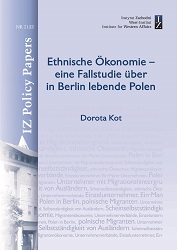
Praca zawiera wprowadzenie w tematykę przedsiębiorczości etnicznej wraz z prezentacją zastosowanych metod badawczych, wyniki badań oraz sugestie dotyczące przyszłych działań, tak indywidualnych (porady dla przedsiębiorców) jak i instytucjonalnych, skierowane do instytucji niemieckich oraz organizacji polonijnych i przedstawicielstw Polski w Berlinie. Izba Handlowo-Rzemieślnicza w Berlinie podaje, że w Berlinie mieszka ok. 55 tysięcy Polaków z Polski i co dziesiąty z nich jest właścicielem firmy. Jest to jednak obraz nieprawdziwy, statystyki bowiem pomijają zarówno osoby naturalizowane, w tym osoby o podwójnym obywatelstwie, jak i Polaków przebywających w Berlinie nielegalnie. Wśród firm polskich większość stanowią tzw. firmy jednoosobowe, korzystające z formuły prawnej, która umożliwiała Polakom podejmowanie pracy w latach 2004 -2011. Polskie firmy w Berlinie to w 80% firmy budowlane i sprzątające oraz przedsiębiorstwa handlowe. Resztę stanowią nieliczne przedsięwzięcia w innych zróżnicowanych dziedzinach: gastronomii, usługach graficzno-marketingowych, obsłudze biur i księgowości, modzie, grafice, IT oraz wolne zawody, jak lekarze czy adwokaci. Poza branżą serwisową dla polskich firm i kilkoma sklepami, firmy polskie nie mają oferty skierowanej do własnych rodaków. Analiza polskiej przedsiębiorczości w Berlinie obejmuje zagadnienia dotyczące zakładania i warunków działania firm oraz ich problemów i perspektyw.
More...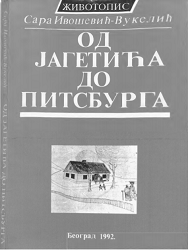
Време када је освојен Запад и кад су се државе ујединиле у републику прешло је у историју. Тежња за померањем последње границе и јуриш пионира као да су ослабили. Међутим, све док људи трагају за идеалима и променом и све док их привлачи непознато, они ће бити пионири. Почетком XX века били смо сведоци великог прилива таквих пионира — имиграната. Они су оставили извесност својих завичаја и отиснули се у неизвесност Сједињених Америчкнх Држава. Они су ризиковали своје здравље, породице и наслеђе за несигурну срећу у „новој земљи". Америка је била нова земља, земља пуна обећања за сиромашне класе. Можда су они који су остали у свом завичају припадали бољим класама и било је вероватније да би у хетерогености Америке изгубили свој статус; али имигранти, расељена лица, избеглице — сви су они иосили огртач пионира. Сара Вукелић Ивошевић била је такав пионир. Она се, као сасвим млада невеста, отисиула из тешког тежачког живота у неизвестан и тежак градски живот у непознатој земљи. Она је испољила храброст и дух неуобичајене за оно доба, а збуњујуће за данашње време. Њено порекло и дух дали су јој способност да се суочи са непознатим у новом свету. Она је имала особине пионира: марљивост, јаку веру, снажан дух и позитиван ум. Недостатке у образовању надокнадила је cовојом успешношћу. Захваљујући раду и јакој вери, постала је вероватно сасвим друкчија него што би била да није никад прешла океан. Њена прича може послужити као пример оним женама које се упуштају у непознато и одговарају на изазове. Модерно доба развијене технологије, образовања и друштвених реформи увело је жене у ново царство промена. Породични живот и професионално усмерење открили су широки спектар потреба. Суштина Сарине повести је у комбинацијама храбрости, мотивације и усмерења. Она је пионир, претходник, чији подвизи могу да оcветле пут онима који је следе. Оиа је нашла онај бели свет.
More...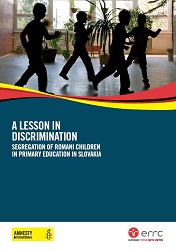
The European Roma Rights Centre and Amnesty International have been monitoring and researching Romani children’s access to education in Slovakia since 1996 and 2006, respectively. This joint report presents a bleak picture: the piecemeal reforms and periodic declarations of intent by successive governments cannot obscure the fact that the discrimination and segregation of Roma in primary education remains widespread and that the Slovak authorities are fundamentally failing to address them. Under national, European and international law, discrimination in the field of education is prohibited in Slovakia. However, in practice, Slovak authorities have not accompanied the ban on discrimination with concrete measures to address or prevent it. In the longer term, the failure to enforce the prohibition of discrimination in access to education has far-reaching consequences for thousands of Romani children who remain segregated in inferior education that traps them in a cycle of poverty and marginalization. Nominal prohibitions are worth little without concerted, proactive measures to address pervasive prejudice and structural flaws that facilitate discrimination and encourage segregation.
More...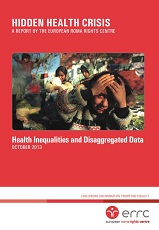
This report identifies differences between Roma and non-Roma in access to health and in health outcomes, through the collection of disaggregated data in households across Romania in 2013. Some of the differences which emerge are extreme – Roma live on average 16 years less, are more susceptible to serious medical conditions, and are less likely to have access to medical attention or be able to afford the costs of medicines when compared with the rest of Romania’s population. The European Roma Rights Centre has undertaken this research to highlight a key problem in health initiatives for Roma across Europe – a lack of data. Through the lens of health inequality, the report highlights the need for all states to collect and publish disaggregated data in order to measure all inequalities between groups within the state and the effectiveness of any measures taken to address existing inequalities. There is a clear need for disaggregated data in order to demonstrate the scope of discrimination Roma face and to develop and implement targeted policy measures to address this situation.
More...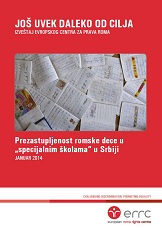
This report is elaborated by European Roma Rights Center (ERRC). After attending ERRC training on field research in the area of „education for disadvantaged students“, a team of 16 Roma researchers interviewed a Roma family whose children attend school for disadvantaged pupils in ten locations throughout Serbia. This team consisted of the following members in alphabetical order: Aleksandar Dinić, Aleksandar Makić, Aleksandar Demirović, Branislav Jovanović, Damir Alijević, Dalibor Nakić, Danica Jovanović, Goran Hasanović, Ina Karab, Jašar Ašimović, Jelica Nikolić, Jovan Nikolić Đuričković, Sladjana Teodorović and Slavica Rakić. Angelina Vučurević conducted field data collected by the researchers. Andrea Čolak prepared an analysis of the legal framework, which served as the basis for the relevant chapter. Marija Manić was responsible for collecting statistical data from the school. Tatjana Perić conducted additional interviews with experts and activists, and he also wrote several versions of this report, including Đorđe Jovanović, Stefan Miler (Stephan Müller), Adam Weiss (Adam Weiss), Merien Pauel (Marianne Powell) and Andrea Čolak . Dezierer Gergelj (Dezideriu Gergely) approved the final version of the report for publication.
More...
As part of the Serb National Council’s Political Academy in 2017 the sixth cycle of lectures and negotiations was held with young activists from Serb community as regular participants. The goal was that they should get to know each other, to exchange experience and acquire knowledge useful for further activities in three areas: 1) within the Serb community, i.e. in its cultural, educational, and social-political organisations, 2) representing Serb community in local, county and state bodies and 3) in public life, especially regarding subjects relevant for the Serb community. 16 participants, mostly younger persons, have attended the Academy.
More...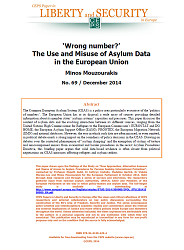
The Common European Asylum System (CEAS) is a policy area particularly evocative of the ‘politics of numbers’. The European Union has at its disposal a wide array of sources providing detailed information about its member states’ asylum systems’ capacities and pressures. This paper discusses thecontent of asylum data and the evolving interaction between its different sources, ranging from the United Nations High Commissioner for Refugees to the European Commission’s EUROSTAT and DGHOME, the European Asylum Support Office (EASO), FRONTEX, the European Migration Network (EMN) and national databases. However, the way in which such data are often misused, or even omitted,in political debate exerts a strong impact on the soundness of policy decisions in the CEAS.
More...
The aim of this book is to present the circumstances and life strategies that contributed in that some Roma people have managed to cross the ethnically conditioned social barriers and achieve higher socioeconomic positions. in a social context where most Roma people remain tied to lowest social classes. Based on qualitative surveys and the qualitative analysis, the book offers and answer how some Roma people included in the study managed to overcome ethnically defined social barriers and reach a higher social position (such as the advancement within the education system or the success in the job market) compared to that of their parents.
More...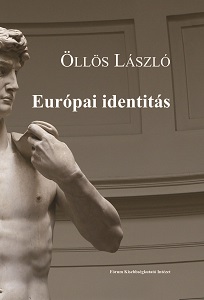
Citizen's identity in the modern states is made up of several components, not only of a single one. Therefore, the conception of European identity also must integrate several components of political mainstreams. And, behind them, there also must be different interpretations of society, as well as different images of man. The present state of Europe is a state of gradual lagging behind other regions of the world. Staying behind on national level, of course, cannot be a national interest, especially not in the age of globalization. Therefore, the real dilemma of European nations lies not in the maintenance of their traditional sovereignty or in their submission to the European Union. The real dilemma is whether they, standing together, will be able to overcome challenges of this age, or they will keep up the root causes of lagging behind.
More...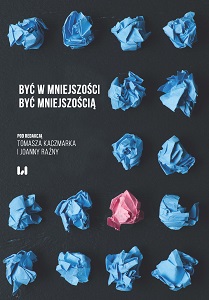
The authors of the articles represent various scientific centers, diverse fields of knowledge; and view the issue of minorities from different perspectives. They want to speak on behalf of all who, for various reasons, are on the margin of majority groups. According to Albert Camus, the writer's role is to defend the excluded who have been deprived of that accusatory voice. Harold Pinter wants to discover “reality through art” to rebuild human dignity. These actions are intended, as Emma Goldman pointed out in her essay under the telling title “Minorities versus Majorities”, to “divide and break up” the majority, because “always, at every period, the few were the banner bearers of a great idea, of liberating effort. Not so the mass, the leaden weight of which does not let it move.” This advocate of women’s rights and sexual freedom does not want to express contempt for the common people, but rather draws attention to the driving force of a thinking human being, ready to change a rotten and unfair system for a truly democratic society of free people: “the living, vital truth of social and economic well-being will become a reality only through the zeal, courage, the non-compromising determination of intelligent minorities, and not through the mass.”Tomasz Kaczmarek
More...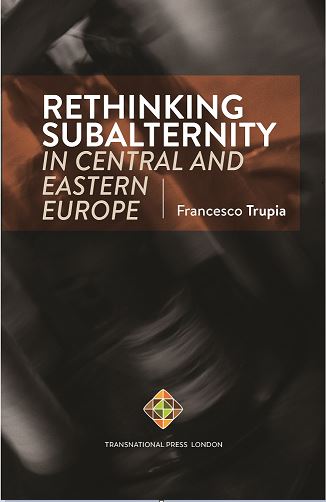
Subalternity is important. This study aims to philosophically investigate the notion of ‘subalternity’ with regard to a variety of minority issues in Central and Eastern Europe. Although a lot has been written about, too little has been achieved in practice. Therefore, this monograph gives a different perspective over the notion of “minority” in the attempt to reopen new and old places of confrontation that would potentially diversify scholarly trajectories of critical investigation.
More...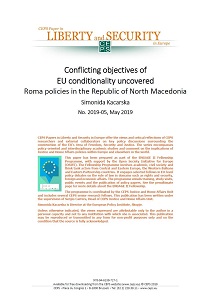
This policy paper examines the conflicting objectives of EU conditionality in relation to Roma in the aftermath of introducing visa-free travel for the Western Balkans, studying the case of North Macedonia. Since the eastern enlargement, EU conditionality on Roma has gradually advanced in terms of both the acceding countries and EU member states. At the same time, the pressures to curb migration in the EU have inadvertently affected the position of Roma. In acceding countries from the Western Balkans, the tension between these two trends has been clearly illustrated with the EU and national responses to the rise of the number of asylum seekers in the EU from this region. Looking at the case of North Macedonia, the paper shows how national authorities, in response to EU member state requests, have instituted practices at the national level that have led to a violation of the rights of the Roma community, by limiting their freedom to exit the country.
More...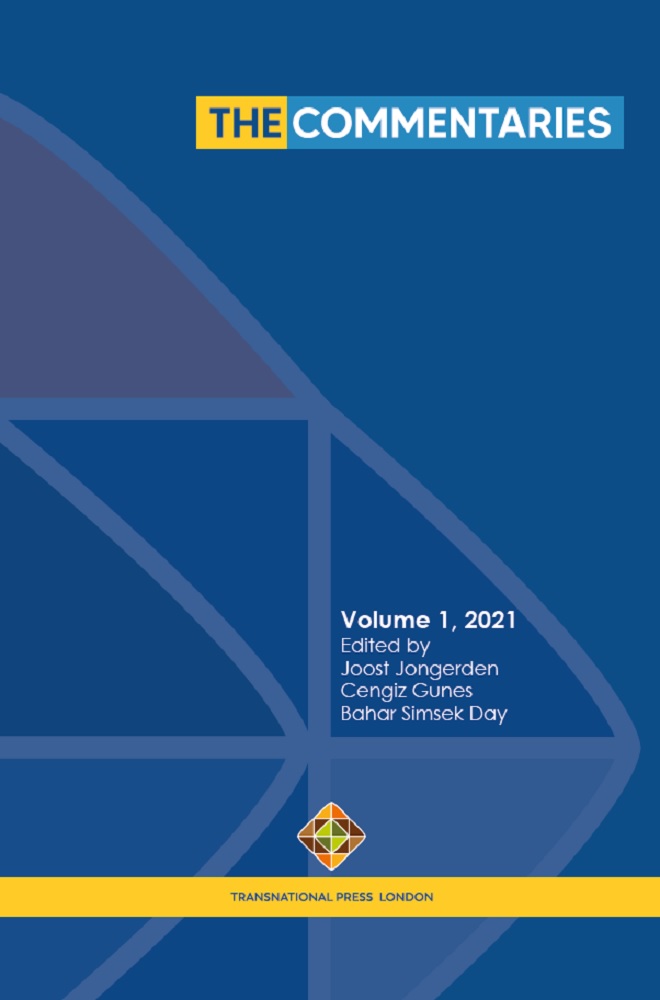
The Commentaries is a journal that publishes analysis, evaluations and assessments of contemporary developments in Turkey, Turkey’s role in the MENA region, and Turkey-EU relations. It does so for a broad audience of scholars, policy-makers, professionals and students. The aim of the commentaries is to draw attention to current advances, discuss policies and practices, and to stimulate critical discussion and theoretical reflection. The Commentaries is an initiative of the European Union Turkey Civic Commission (EUTCC). However, views expressed in The Commentaries do not necessarily reflect the opinions of the EUTCC (EU-Turkey Civic Commission) nor its members. Submissions to The Commentaries are reviewed by the editorial board. Commentaries are published online. Print copies of The Commentaries are published on a yearly basis.
More...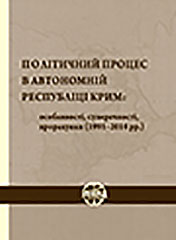
The analytical report is prepared by the results of scientific and research work on the theme “Political process in the Autonomous Republic of Crimea; special features, contradictions, miscalculations (1991-2014)”. The special features, contradictions and miscalculations of political processes in the development of the Autonomous Republic of Crimea during 1991-2014 are examined, the “weak points” of state policy in relation to the region are highlighted, the grounds for the Crimea’s exit beyond the legal framework of Ukraine are analysed, the conflictogenic nature of the region is investigated, the dominant entities of the policy are defined and their participation in the political processes is analysed, the interaction of political structures in the Crimea is shown, the impact of negative political actors on the political situation in the region is distinguished, the transformation forms of interests and requirements of the population into the administrative decisions are defined, the ways of entity’s incorporation in the relations between the centre and the region are outlined, the miscalculations in the ethnic, religious and information-security policy towards the Russian nationalism and separatism are examined.
More...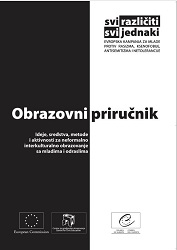
Kada je ovaj Obrazovni priručnik napravljen još 1994. – 1995.g , pristup internetu bio je praktično ograničen na akademsku populaciju, veliki biznis i vlade – niko od nas nije imao e-mail, a kontaktirali smo jedni druge koristeći poštu, faks i telefon. Danas, pristup internetu još nije omogućen svima i moramo da činimo više da se borimo protiv ove nove vrste isključivanja. Ipak, stvari se popravljaju i mogućnosti da se internet koristi za razmjenu ideja i omogućavanje veće dostupnosti publikacija – u poređenju sa 1995. g. – su nevjerovatne. Doprinoseći narastajućoj zajednici prakse obrazovanja u oblasti ljudskih prava širom svijeta, svakako će pomoći u stvaranju veza i solidarnosti. Ubrzo nakon objavljivanja 1995.g., Obrazovni priručnik „svi različiti – svi jednaki” postao je referenca za one koji se bave interkulturalnim obrazovanjem i obukom u Evropi i šire. Prevedena na mnoge jezike, ona ostaje jedna od najuspješnijih i najviše korišćenih publikacija Savjeta Evrope. Sa uspješnim pokretanjem elektronske verzije Kompasa - priručnika za obrazovanje mladih u oblasti ljudskih prava, čini se razumljivim da se osavremeni publikacija koja sačinjava osnovu obrazovnih napora u kampanji “svi različiti - svi jednaki“ i da se oni učine šire dostupnim u kontekstu Obrazovnog programa u oblasti ljudskih prava za mlade. Deseta godišnjica kampanje “svi različiti - svi jednaki“ je takođe dobra prilika da se ovim materijalima udahne novi život.
More...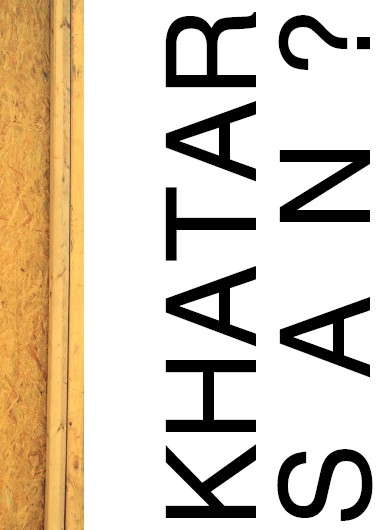
The exhibition catalog presents the exhibition “Khatar san? How Slovak Roma came to the Czech lands for work and what was happening next” in three parts. First, there are presented the conceptual foundations of the exhibition project, included the choice of exhibition places in the pilot exhibiting year. Second, the exhibition space is presented. It is divided into five thematic parts, and there are presented portrait and historical photographs alongside with the strongest quotations from the witnesses’ narratives. The catalog is concluded with the overview of all participating witnesses from Ostrava region and Brno. The catalog is made in parallel Czech-English version and it accompanies the exhibition tour in 2015.
More...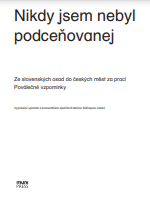
A collection of narratives of men and women who left Slovakian Roma settlements when they were children or youngsters, in order to settle down in Brno and Ostrava region, where they found work and new life. Their descendants experience completely different working and social reality. The witnesses´ narratives (maintaining certain particularities, e. g. the Roma ethnolect of Czech language) describe this transition through the perspective of everyday life and point at the socialist equalization of lifestyles and its consequences for today´s life. The narratives originated within the project “Memory of Roma workmen”. The book contains the analytic commentary explaining the work on memory collection and editing. The book is designated to the professional as well as wider audience.
More...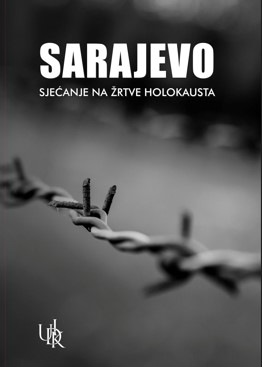
About 80% of Bosnian Jews lived in Sarajevo. Of the approximately 10,500 Jews who were in Sarajevo before World War II, approximately 9,000 were taken to Ustasha and Nazi camps. About 1,500 surviving Jews returned to Sarajevo after the war. The largest number of survivors are participants of the National Liberation War, while a smaller number met their freedom in camps. The publication “Sarajevo: Remembrance of Holocaust Victims” documents the names of fallen fighters, citizens of Sarajevo in the National Liberation War, fallen fighters for the liberation of Sarajevo and victims of fascist terror. The list of names was obtained from the daily Oslobođenje, which published the same list year before when a Mass for Bleiburg was held in the Sarajevo Cathedral.
More...